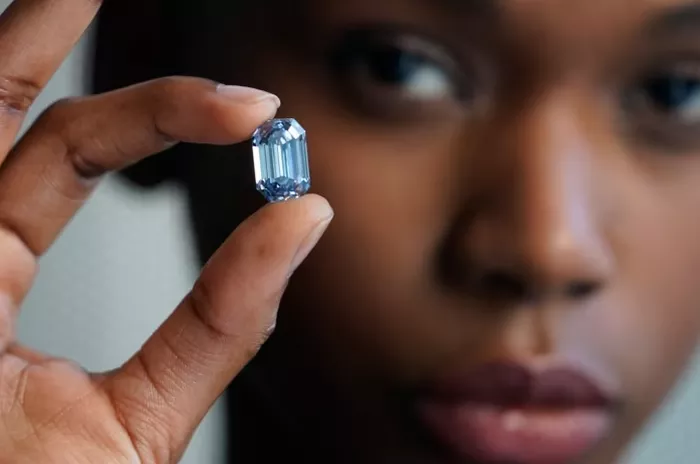The head of De Beers, Al Cook, plans to turn the diamond mining giant into a top luxury jewelry retailer. This comes after the company faced its toughest year in over two decades due to a severe industry downturn.
De Beers currently sells diamond jewelry worldwide through its boutiques. Cook aims to double the number of these stores to compete with luxury brands like Tiffany and Cartier. This move is part of a strategy to create a mining-to-retail operation, as owner Anglo American prepares for a sale or listing following BHP’s failed £39 billion takeover bid.
“If I look at the future of diamonds, it is way beyond mining,” Cook told the Financial Times. “I’m really excited by the idea that we can really deploy our full strategy all the way to creating the world’s greatest jewelry maison [house], which would not be a natural part of a mining company.”
De Beers experienced a significant drop in diamond sales last year. High interest rates and inflation reduced earnings, and competition from synthetic lab-grown gemstones lowered demand for mined diamonds. The company estimates that $4.5 billion in lab-grown diamond sales last year deprived mined diamonds of $7 billion in sales in the US, reducing core earnings to $72 million in 2023, the worst since delisting from the Johannesburg Stock Exchange in 2001.
In response, Cook recently introduced the “Origins” strategy to counter the lab-grown diamond threat and capture market share in India, which is set to become the world’s second-largest diamond market this year. He plans to expand beyond mining with a goal of having 100 De Beers jewelry stores worldwide by the end of the decade, up from the current 40, and develop new product lines.
De Beers will subcontract manufacturers to turn a portion of its rough stones into polished diamonds for sale in its branded stores and other retail channels. This changes the current practice of selling rough diamonds to select customers and buying them back as polished stones. Cook aims for $1.5 billion in annual core earnings by 2028.
Anglo American, which owns 85% of De Beers with the remaining 15% held by the Botswana government, plans to sell or spin off the diamond miner along with three other divisions. Potential buyers include Gulf sovereign wealth funds, Chinese investors, billionaire individuals, or luxury houses, but a sale could be challenging due to a decade of slow growth. Anglo’s CEO, Duncan Wanblad, warned that market conditions would make a divestment difficult before 2025, and Richemont has denied interest in buying the group.
One of Cook’s more radical plans includes selling polished diamonds outside of exceptionally rare or large stones. This would change De Beers’ exclusive “sightholder” sales system, where only 69 buyers can purchase diamonds at 10 sales events each year. Cook noted that polished stone sales would initially be “relatively small” and that returning to profitability would mainly come from cost cuts and increased rough diamond prices.
A company presentation indicated that 7% of core earnings in 2028 would come from retail activities, including its De Beers jewelry shops and Forevermark brand, which operates in China, Hong Kong, India, Japan, and the US.
“Expanding De Beers Jewelers makes sense as branded jewelry is the industry’s fastest-growing category,” said Paul Zimnisky, an independent diamond analyst. “I just hope that the company has enough capital and support to execute these initiatives, given the precarious state of the company with its current parent, Anglo American.”
In addition to expanding retail jewelry, De Beers plans to stop selling lab-grown diamonds for jewelry and instead focus on their use in technology, such as materials for next-generation 6G semiconductors.

